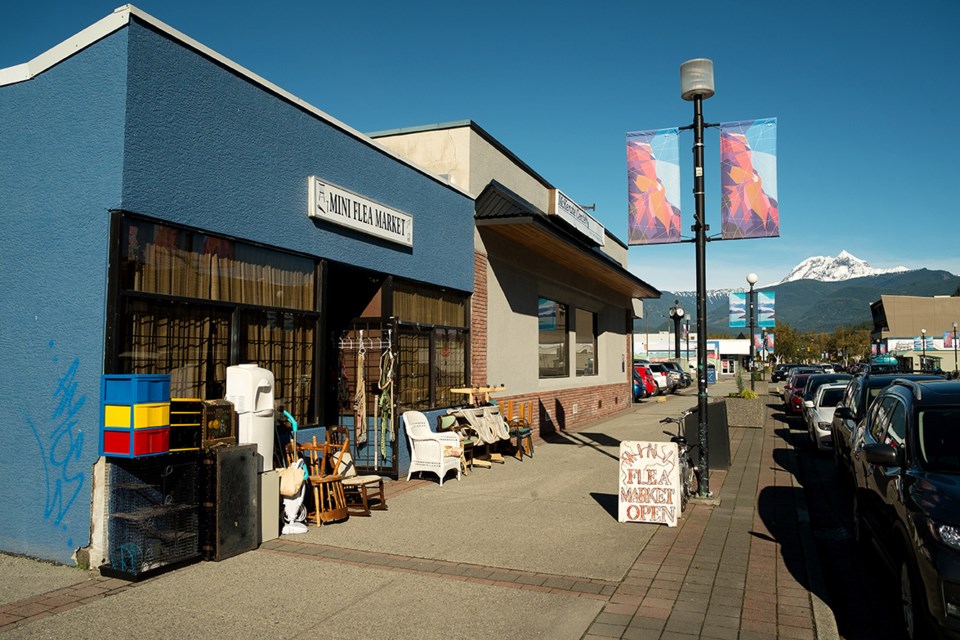B.C. is an expensive place to live, especially the Lower Mainland and Sea to Sky Corridor.
A recent report by the Chartered Professional Accountants of British Columbia published earlier this month identified attracting and retaining skilled employees as the number one challenge facing new and established businesses.
The report stated that in addition to higher living costs, B.C.’s average annual wage lags behind the national average, at $54,030 to $58,162 nationally. It went on to state that in 2016 there was a decline – for the first time in five years – in the educational level of the labour force, suggesting skilled workers are seeking employment elsewhere.
Former Squamish BIA president, Eric Armour, who has owned small businesses in Squamish for the better part of two decades, takes the issue of employee retainment in stride.
“Business is always full of challenge. It won’t stop business from being started. A lot of the problems we have here are good problems. Cash flow is good, businesses are busy.”
He admits though that affordability is a common challenge for Squamish businesses seeking new employees or retaining valued existing workers.
“Affordability is the biggest problem, but not an insurmountable one,” he said.
Armour says the challenges of retaining employees can be a positive.
“It forces employers to be more creative in how they treat employees. You create a great culture, have staff parties, incentive programs or even just a little ‘thank you’ in the form of gift cards to let them know they’re appreciated.”
Current executive director of the Squamish Chamber of Commerce, Louise Walker feels Armour is on the right track with his ‘change in culture’ approach to managing employees.
“This challenge creates an opportunity to think of your team. To let people feel like they’re being invested in, appreciated,” she said.
However, Walker acknowledges, there is still a growing affordability gap.
“It’s definitely something we’re aware of. We find through our member surveys that two-thirds of businesses have had trouble recruiting employees. Mainly it is lack of affordable housing or lack of skilled employees. So yes, it is something we’re concerned about.” She added that it is not a problem unique to Squamish and that the chamber is working in collaboration with other chambers in the corridor and North Shore in finding collective solutions.
Former District councillor (2008-2014) Bryan Raiser said that as a councillor the affordability issue was addressed, “But it’s a whole different Squamish now,” he said. “The issue is really bigger than what the District can deal with. We’re kind of in uncharted territory.” He added, “What did Whistler do? They had all of their employees move to Squamish, but now that’s gone, so now what?”
Raiser noted that Whistler at least created a housing authority to provide below-market housing to employees. It’s a step that Squamish is still working toward, although Raiser concedes, Whistler’s housing authority has been a mixed bag of results.
Greg Fischer, who was Squamish Downtown BIA president previous to Armour, as well as a former chamber of Commerce director and small business owner of Gelato Carina for 13 years, says Squamish can be a challenging place to start and run a business.
“Hard work didn’t make it work. We made mistakes along the way, but also our triple net went up 150 per cent over 13 years. It’s hard to absorb that. You can’t charge $6.50 for a small gelato.”
With triple net lease agreements, the lessee agrees to absorb additional costs from the landlord over the term of the lease, above the agreed upon rent, namely, insurance, maintenance and taxes.
Fischer says that new businesses, especially retail, service-oriented businesses that wish to open in Squamish also face a tough challenge in finding space.
“Right now, you can’t find a space if your life depended on it,” says Fischer.
Kate Mulligan, economic development officer for the District of Squamish, says the District is aware of the constriction in available commercial lease space.
“If it’s not labour, we hear about space. The District completed the Employment Lands Strategy in 2016, and council and the District are actively working on it.”
Mulligan said lease rates, although no doubt impacted by the tight lease market, are still competitive with Vancouver. She adds that there is a growing sector of work-from-home entrepreneurs in Squamish.
That aside, the problem of finding and retaining employees looms large on District and council minds.
“This comes up with pretty much everyone I talk to in the community.”
Yes, says Mulligan, the problem is mainly housing.
“B.C. is not an inexpensive place to live, especially Squamish with its proximity to the Lower Mainland.”
In answer to this problem, said Mulligan, the District conducted an 18-month study on affordable housing. The study resulted in 13 recommendations, some of which have already been acted on by council.
“Through amendments to bylaws and relaxing some regulations we’ve encouraged more secondary suites and carriage houses. For larger developments, a portion of those projects has to provide permanently affordable housing units. And there are two purpose-built rental projects underway, being built on District land.”
Walker stresses that affordability, business land, and a diverse economy are linked.
“We need well-paying jobs, as we want a strong economy that serves both the local community and exports to other markets. We can’t just be a bedroom community.”
Mulligan says largely the same about the District’s current and long-term goals for Squamish.
“Well-paying jobs help propel the rest of the community economy.”
Even with the challenges of affordability, Mulligan says business inquiries at the District continue at a healthy pace.
“The tech sector likes Squamish, as they know they can attract people to work here. We also get a lot of inquiries from manufacturing, and of course tourism.”
Fischer, despite his concerns, does remain optimistic.
“I was positive 13 years ago and I’m positive now. There are new people coming into town, the Sea to Sky Gondola was a huge, huge plus for Squamish, especially downtown. We’re actually in a post-gondola boom.”
Armour also remains positive about the overall direction of Squamish.
“Business cycles are going to fluctuate, interest rates will go up, housing prices will fluctuate, problems today will be different tomorrow. I’m 100 per cent positive about Squamish as a place to do business.”
His advice on how the District could help improve the current business climate?
“I would say: the same thing as anyone would say, lower taxes. I say that tongue in cheek — lower taxes is the easy answer. I think the District does need to stay creative and aggressive in their economic development portfolio, keep it active and working… and lower taxes.”




